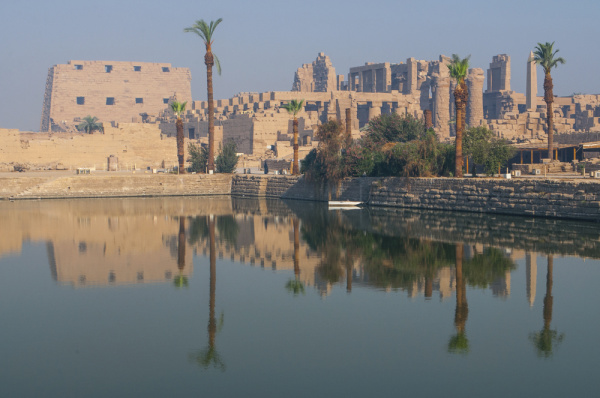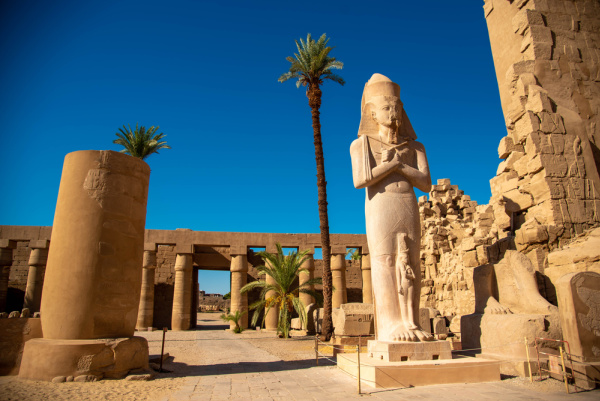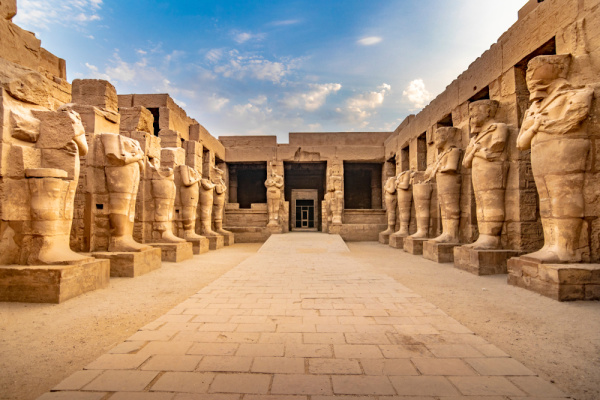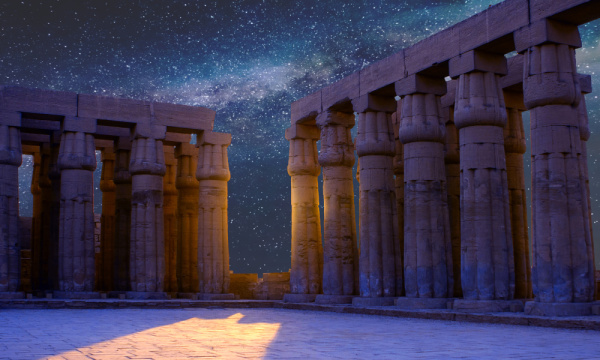Karnak Temple, Luxor, ‘the greatest monument ever made’
Karnak Temple, Luxor, ‘the greatest monument ever made’
Karnak Temple, Luxor, ‘the greatest monument ever made’
-
Hannah
-
Hannah

The temple complex is part of the ancient capital Thebes and was the most important place of worship in the New Kingdom. It covers 247 acres and includes a huge array of temples, chapels, shrines, statues, obelisks and pylons (monumental gateways to temples formed by two pyramidal towers).
Three main areas of the complex were devoted to different deities: the Precinct of Amun-Ra (patron god of Thebes, fused with the sun god, Ra), the Precinct of Mut (mother goddess) and the Precinct of Montu (son of Amun-Ra and Mut, and god of war). There are also two sacred lakes: the Precinct of Amun-Ra has a rectangular one, and the Precinct of Mut has a crescent-shaped one.

View of the Temple of Amun-Ra over the sacred lake
I could easily fill ten blog articles with the amazing ruins at Karnak. Particular highlights include the Great Hypostyle Hall at the Temple of Amun-Ra, with its forest of inscribed papyrus-crowned columns, and the avenue of sphinxes (pictured above). Statues of Ramesses II are also prominent.

Statue of Ramesses II

Statues of Ramesses II depicted as the god Osiris
Karnak is awe-inspiring seen by day, but it is even more memorable by night. In my novel Song of the Nile, Phares takes Aida to the temple during the night. He leads her to the Great Hypostyle Hall of the Temple of Amun-Ra, above which stars glimmer in the night sky.

I will leave you with this extract from Song of the Nile which, I hope, will transport you back in time to ancient Karnak.
Phares gently pulled Aida against him. ‘This is a special place, Aida. It can only be appreciated at this hour,’ he murmured next to her ear. ‘You need to imagine it as it used to be, feel the emotions it roused in the souls of the faithful. This is one of the most magical gifts I could think of giving you…’
Suddenly, he let go of her and moved away. For a split second, Aida felt nervous, but Phares’s warm voice came softly out of the darkness and began to tell her of the boy king Tutankhamun, who had come this way to his coronation, of the priests and court nobles who had led him in, a small child of nine, walking beneath these great columns. He told her of the musicians who had played for him, their music echoing among the stones as the great procession moved slowly on to the inner temple and into the presence of Amun, the god of gods.
‘Close your eyes, Aida. Don’t you hear the drums and the lutes and the reed pipes?’
Song of the Nile: available to buy now
Phares began to recite poetry to her, some in the original Ancient Egyptian, some that she could understand. His words danced in her head, telling of the young Pharaoh, the living embodiment of a god, and the heroes and deities of these ancient lands.
There was silence as his voice died away, then he spoke again, ‘Open your eyes, chérie. Look up.’
Aida did as he said and saw the first rays of dawn suddenly breaking through the sky, the rich golden light touching the carved heads of the columns, bringing to life the brilliant colours that still adorned them. She caught her breath as carved muscles seemed to flex, eyes to see, and mouths to smile, welcoming the new day.
The sun rose and the temple filled with glorious light, once again becoming the place of worship it was created to be, reaching out for the dawn’s serenade and as it had done for thousands of years, showing itself to be the greatest monument that man had ever made to their gods.

Such a wonderful temple! I have spend hours there when I visited, so much to see and every time I go there is something I haven’t seen. There was one temple (built by the Coptics) where they reused some of the blocks from other temples but they managed to place a couple of them upside down so the painted scenes looked a little odd the wrong way up!
Such wonderful humanity in that little mistake! The imperfections are really what make them so perfect.